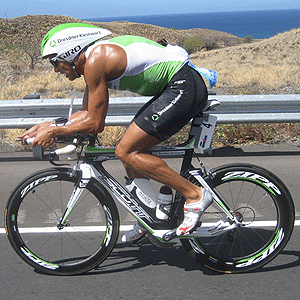
Tri, road, or tweener?
There are three ways to ride a bike: road race (the way pros do it); triathlon (the way pros do it); and that strange morphing of the two which we call the “tweener.”
by Dan Empfield, December 29, 2008
There are three ways to ride a bike: road race (the way pros do it); triathlon (the way pros do it); and that strange morphing of the two which we call the “tweener.”
by Dan Empfield, December 29, 2008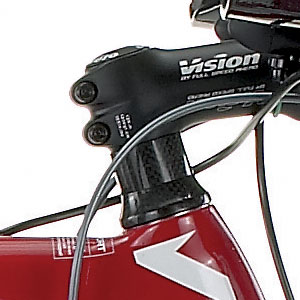
In the second and final part of this series, we look at how remote bike fitting aids the retailer who’ll invest the time, and thought, and energy to the display of the tri bikes he inventories.
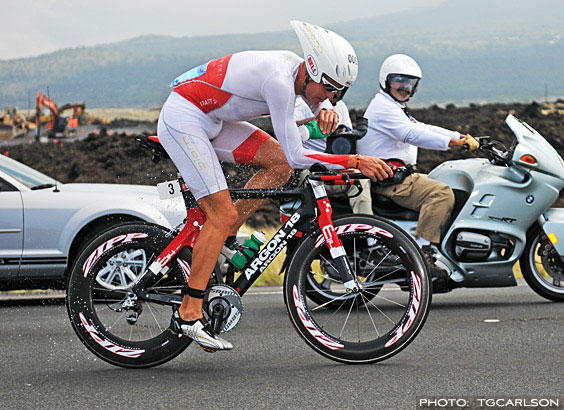
Ex pro duathlete, and Kuota sales guru, Paul Thomas apprised me of a very interesting experiment he undertook at the most recent Hawaiian Ironman.
“I sat on the Queen K Highway as the riders were about 5 miles from the end of the bike leg,” he related. “This was about 7 hours into the race. I counted 72 riders, all of whom [of course] had aero bars on their bikes. Of these, 42 were riding with their hands on their pursuit bars.”
If you allow about 1:20 for the swim, and these folks were riding about a 6 hour bike split, they were destined to finish, on average, with a final time between 11:00 and 11:40. Most were representative of the median Kona finisher.
Let’s leave the topic of these 72 riders, and we’ll return to them in a few moments.
Last year former Kona Champ Chris McCormack was in a fit workshop here on the property. I asked, “Chris, let’s say I made a DVD of your Kona bike ride, and I edited out the part where you were in the aero position, as well as the time spent braking and cornering. How long would my DVD be?”
“I don’t know,” he pondered. “Thirty seconds?”
What makes McCormack, and the other pros like him, able to ride in the aero position during the entire bike leg, while these 11 hour Ironman contestants as often as not can’t?
On a recent thread in our reader form, this was written by a user:
“I’ve observed that triathletes fall into two camps in terms of position: those who want to get forward and low to be most aerodynamic and who are willing to take the time, effort and pain to get adapted to the position; and the majority, who decide to be more upright for the sake of comfort.”
But if McCormack and the other pros are adapting through “pain” to achieve their positions, and the “majority” choose “upright” positions for the sake of “comfort” (certainly a view held by many more than this singular forum reader), why are the pros sitting in their aero position the whole way, while it’s the “comfortable” age groupers who’re sitting up?
In another fit workshop, we had Mark Allen in attendance. I asked him, “Mark, once and for all, did you win Kona 7 times and the Nice triathlon 9 times because you have the taint of steel?
“No!” he replied, and went on to explain he needed comfort on the bike as much as anyone.
And why should we think an age group triathlete, who might ride 100 miles a week on average, is more needful of a comfortable bike position than a pro who might ride three or four times that mileage?
Indeed, I think it’s the opposite: how could we ever expect a pro to ride in the uncomfortable positions chosen by age groupers?
Indeed, I have positioned many pro triathletes and time trialers, and I have yet to find my first subject willing to undergo a period of “pain” and “adaptation.” Unless a pro triathlete is comfortable and powerful on the fit bike, from the get-go, he won’t ride the position. The process of fitting a pro, and his response to the position, is never any different than that of an age-grouper.
Let’s take a look at the positions of some of the pros, and see if we can find some commonalities that accrue to power, comfort and aerodynamics. While we’re at it, I’ll point out some pro positions that I think don’t make the grade, and describe why that is and what ought to change.
Click on the first thumbnail pic above and we’ll start.
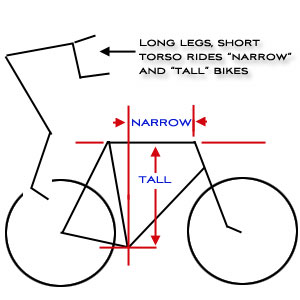
It’s late November. Don’t you love the change of seasons? Depending where you are, the greens are turning to yellow, and the yellows red. But that is not the change to which I refer.
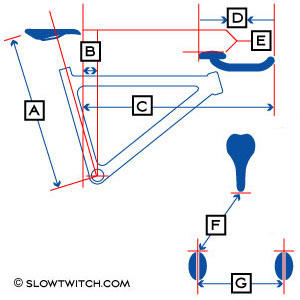
There exists a method for fitting bikes for mail order purchases; and for retailers to present floored bikes; should such enterprising retailers avail themselves of it. Part I of II.
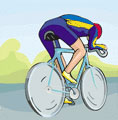
“Why am I uncomfortable on my bike?” Do you have occasion to ask this? We endeavor to find the answer in our series on the subject. Our first installment focused on contact points. This is the second and final installment.
The F.I.S.T. tri bike geometry calculator is open for beta testing. Your fitter plunks numbers into our online engine and, poof, your custom bike geometry!
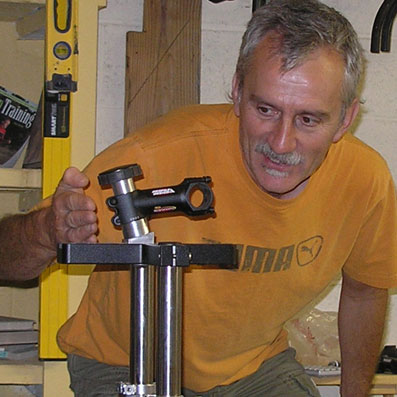
Exit Cycling finished work on an angular head pin for its X/Y adjustable fit bike. This makes Exit Cycling, the fit bike maker owned by popular custom bike builder Ves Mandaric, a one-of-a-kind machine.

Road testing the 3T Ventus aero bar properly required a bit of trigonometry, a dash of ingenuity, and smidge of creativity, some nerve, and a credit card with room on it.
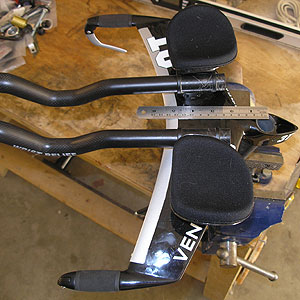
There are some very sexy integrated aero bars on the market right now. Profile Design’s Carbon X. 3T’s Ventus. Visiontech’s Trimax. All these feature integrated stems. How does one divine what frame fits these bars?
Are numerical sizing schemes more accurate than T-shirt sizes? Yes, but only marginally.
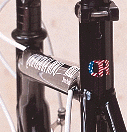
Thinking about getting a Scott Plasma? How about a Specialized Transition S Works? What size bike is your best fit? Would it surprise you to know that one in size M fits precisely the same size as the other in size L?
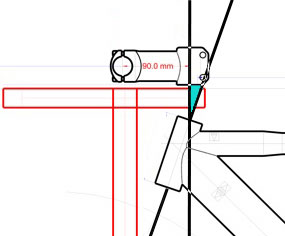
Tri bike fitters using the F.I.S.T. system often find they need a size bigger bike for their customers versus what the fit session indicates. Here’s why.